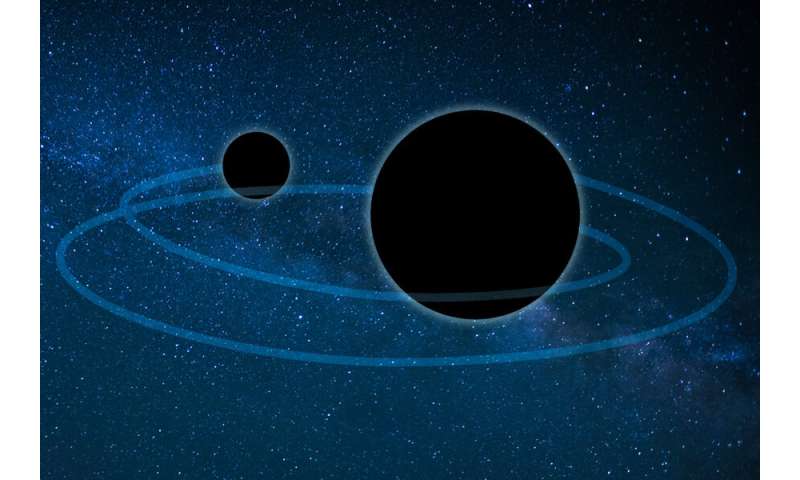by JENNIFER CHU

A lopsided merger of two black holes may have an oddball origin story, according to a new study by researchers at MIT and elsewhere.
The merger was first detected on April 12, 2019 as a gravitational wave that arrived at the detectors of both LIGO (the Laser Interferometer Gravitational-wave Observatory), and its Italian counterpart, Virgo. Scientists labeled the signal as GW190412 and determined that it emanated from a clash between two David-and-Goliath black holes, one three times more massive than the other. The signal marked the first detection of a merger between two black holes of very different sizes.
Now the new study, published today in the journal Physical Review Letters, shows that this lopsided merger may have originated through a very different process compared to how most mergers, or binaries, are thought to form.
It’s likely that the more massive of the two black holes was itself a product of a prior merger between two parent black holes. The Goliath that spun out of that first collision may have then ricocheted around a densely packed “nuclear cluster” before merging with the second, smaller black hole—a raucous event that sent gravitational waves rippling across space.
GW190412 may then be a second generation, or “hierarchical” merger, standing apart from other first-generation mergers that LIGO and Virgo have so far detected.
“This event is an oddball the universe has thrown at us—it was something we didn’t see coming,” says study coauthor Salvatore Vitale, an assistant professor of physics at MIT and a LIGO member. “But nothing happens just once in the universe. And something like this, though rare, we will see again, and we’ll be able to say more about the universe.”
Vitale’s coauthors are Davide Gerosa of the University of Birmingham and Emanuele Berti of Johns Hopkins University.
A struggle to explain
There are two main ways in which black hole mergers are thought to form. The first is known as a common envelope process, where two neighboring stars, after billions of years, explode to form two neighboring black holes that eventually share a common envelope, or disk of gas. After another few billion years, the black holes spiral in and merge.
“You can think of this like a couple being together all their lives,” Vitale says. “This process is suspected to happen in the disc of galaxies like our own.”
Phys Org for more
